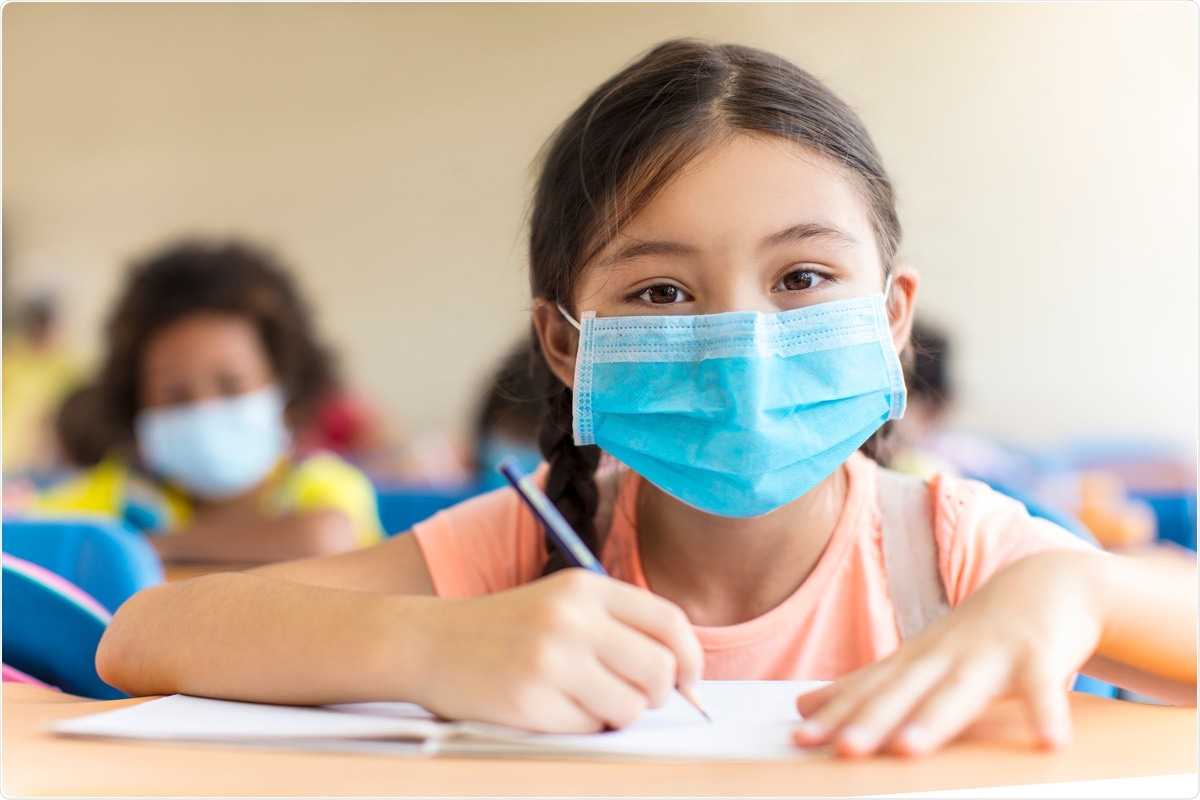One of the most effective non-pharmaceutical measures to manage the current coronavirus disease 2019 (COVID-19) pandemic, caused by the rapid transmission of severe acute respiratory syndrome coronavirus 2 (SARS-CoV-2), has been the use of facemasks.
Several studies have reported that the use of facemasks has restricted the spread of SARS-CoV-2 infection. To date, the impact of facemask requirements in school settings has not been widely evaluated.

Study: SARS-CoV-2 Incidence in K–12 School Districts with Mask-Required Versus Mask-Optional Policies — Arkansas, August–October 2021. Image Credit: Tom Wang / Shutterstock.com
About the study
In a recent Morbidity and Mortality Weekly Report published by the United States Centers for Disease Control and Prevention (CDC), researchers evaluate the impact of wearing facemasks by students in schools and the incidence of SARS-CoV-2 infection.
The authors revealed that during fall 2021, some school districts in Arkansas implemented the use of facemasks for students in kindergarten through grade 12 (K–12). To determine the association between facemask policies and COVID-19 incidence, a number of SARS-CoV-2 infections in schools following the implementation of full or partial facemask requirements were compared with the number of COVID-19 cases in school districts that did not implement the requirement of wearing facemasks. This data was collected on a weekly basis between August 23, 2021, and October 16, 2021.
In this study, the researchers calculated the incidence rate ratios (IRRs) by comparing districts with full or partial facemask requirements with those that did not implement this type of policy. They further calculated ratios of observed-to-expected numbers of cases by district and COVID-19 incidence in districts that changed their policy from no mask requirement to any mask requirement.
Relevant data was acquired from various databases, such as the Arkansas Department of Health’s (ADH’s) COVID-19 surveillance database and immunization registry, Arkansas Center for Health Improvement’s mask policy database, and Arkansas Department of Education’s 2021–22 enrolment and 2019 free or reduced-cost school lunch databases.
Study findings
Districts with a full mask policy exhibited 23% lower COVID-19 occurrence among students and staff members as compared to school districts with no mask requirements. Additionally, the observed-to-expected ratios for full and partial mask policies were less than ratios for districts with no mask policy; however, the ratio was marginally higher for districts with partial mask policies as compared to those with full mask policies.
Interestingly, districts that switched to full or partial mask requirements from no mask requirement revealed a significant reduction in the number of COVID-19 cases. These findings revealed that facemasks provide effective protection against SARS-CoV-2 infection in K–12 settings.
Implications
The current study showed that public school districts in Arkansas with full or partial mask requirements exhibited a decreased number of CIVID-19 cases among students and staff members as compared to schools that did not implement a mandatory mask policy. One of the main strengths of this study is the use of multiple analyses and sensitivity studies to determine the effect of facemasks in school settings.
Based on their findings, the authors strongly recommended universal mask use in combination with other preventive measures, such as vaccination of the eligible candidates, which would protect K–12 schools from SARS-CoV-2 transmission. As compared to surrounding communities, school districts, on average, were associated with a higher incidence of COVID-19 among students and staff members, which could be mitigated by the usage of facemasks.
Limitations
In this ecologic study, various important data were omitted, such as data on ventilation and other school-based prevention efforts. However, the researchers considered all surrounding communities' COVID-19 incidence.
An additional limitation of the current study was that compliance with an existing mask policy was not directly observed or evaluated. However, non-compliance with mask policies would generate biased results.
Additionally, quarantine rules varied from one school to another, with or without mask requirements. Notably, students in schools with mask requirements were less likely to be quarantined than those studying in schools without mask requirements, which could lead to a potential bias in IRRs toward the null.
The researchers failed to separately investigate the impact of full and partial mask policies because of small sample sizes. In the future, additional studies are required to better understand the effect of facemasks in school settings amidst the prevalence of new SARS-CoV-2 variants.